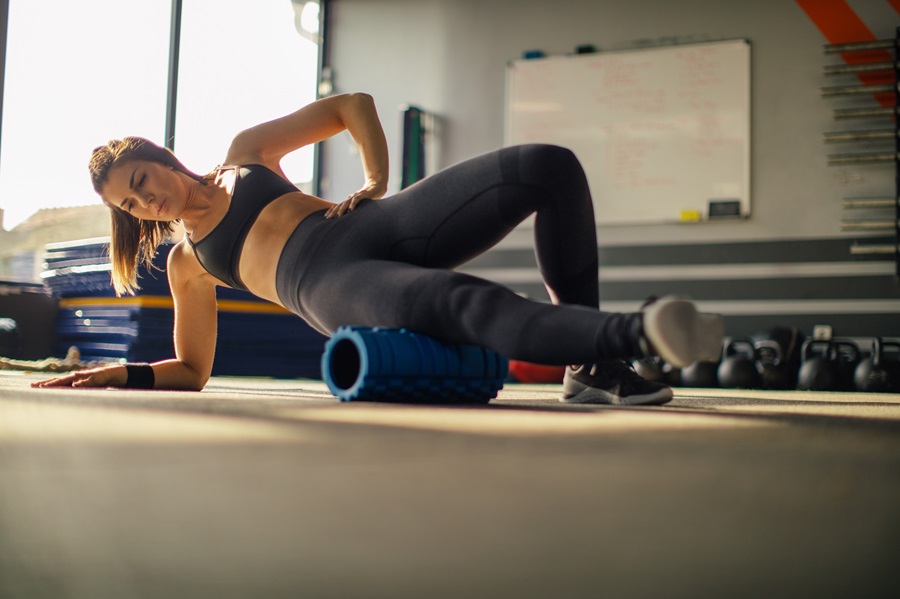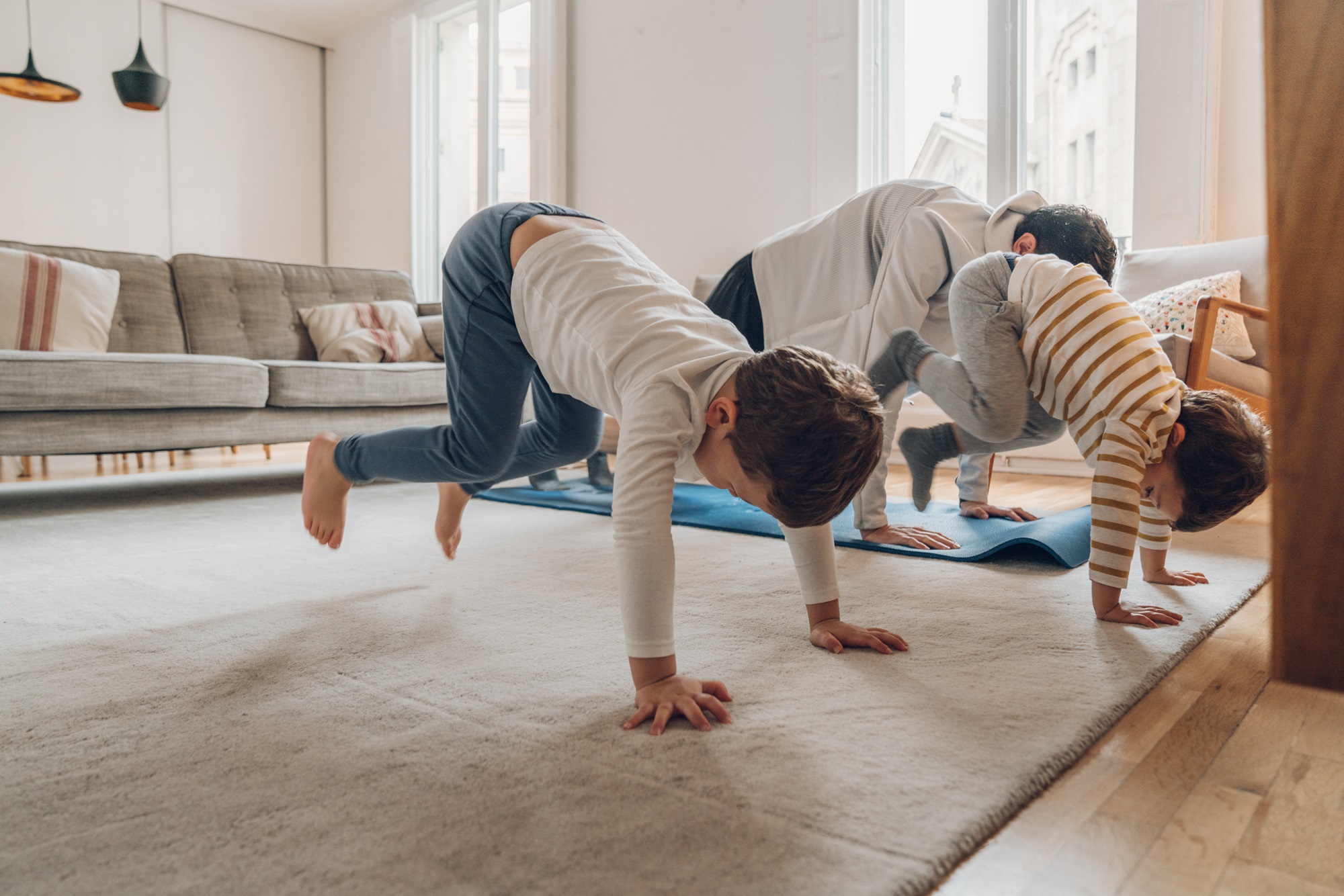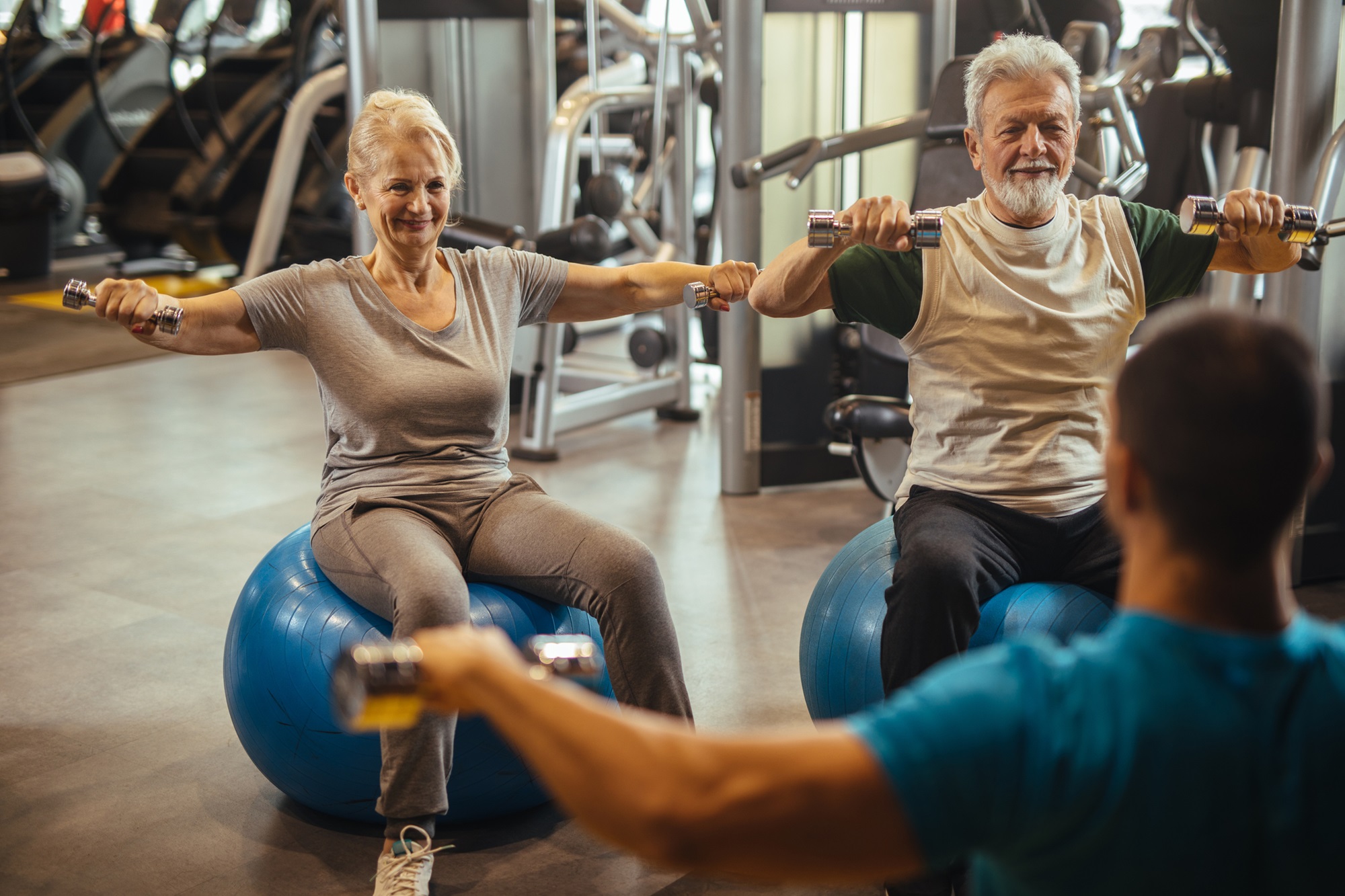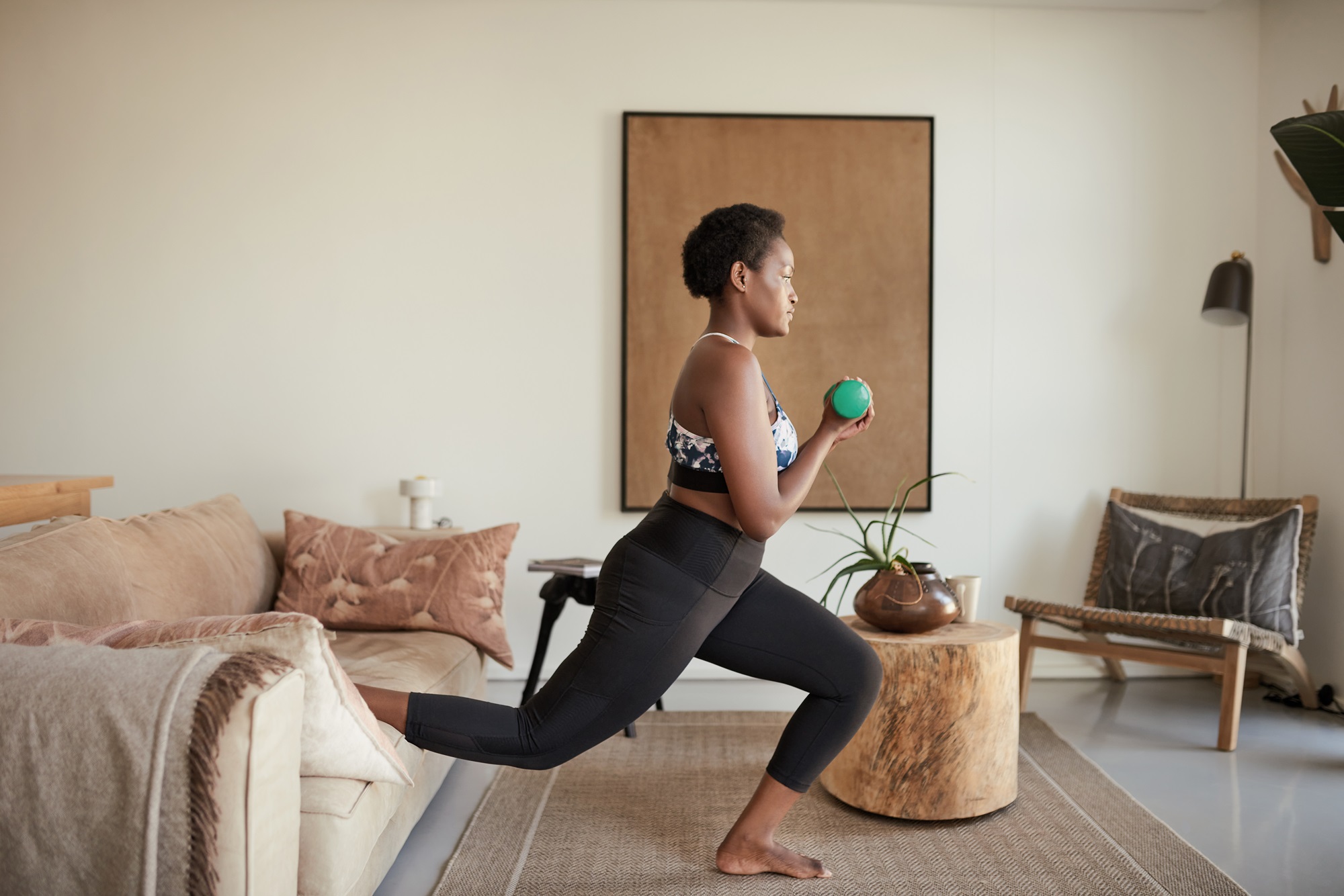- Home
- Mind & body
- The health benefits of Pilates for your mind and body
At CBHS we help you manage your health challenges. We believe in offering you the services, support and tools you need to live your best life.
Our Better Living Programs are available to support eligible members towards a healthier lifestyle. Each Better Living Program is subject to its own eligibility criteria.
Contact us for more information and to confirm your eligibility for a program.
The health benefits of Pilates for your mind and body

The health benefits of Pilates
Doing Pilates regularly can have health benefits including:
- increased flexibility, strength and muscle tone (especially in your core muscle groups)
- better muscle control, spinal stability and body awareness
- balanced strength in the muscles on both sides of your body
- improved circulation and breathing capacity
- relaxation and reduced stress
- better posture, co-ordination and balance.
“Doing Pilates regularly can have a range of benefits for your physical and mental wellbeing.”
Pilates can also help with injury prevention, and provide a safe, controlled way to recover and regain strength and function after an injury.
Pilates may also support wellbeing as we get older. One review of 10 studies looked at the effects of Pilates training in people aged 60 to 80 years. They found it could help prevent falls and improve muscle strength, walking ability, balance, mood, daily living activities and quality of life in this group.
Other studies have shown Pilates may help to improve physical function and fatigue in people with multiple sclerosis, and enhance leg function in people with Parkinson’s disease.

What’s the difference between yoga and Pilates?
Both involve specific moves, deep breathing and concentration, so it’s reasonable to wonder about the difference between yoga and Pilates.
Yoga originated in India and is an ancient practice that focuses on building physical and mental wellbeing. It involves moving through a series of bodily poses (called ‘asanas’) along with breathing techniques, mindfulness and meditation. There are numerous types of yoga, including Iyengar, Hatha, Bikram, and Vinyasa. The intensity of a yoga session can vary from mild to vigorous.
Pilates is named after Joseph Pilates, who developed the technique to improve his own physical fitness and adapted it for use in rehabilitation. It involves exercises designed to build greater muscle strength, flexibility, balance and posture. There are two types of Pilates:
- matwork Pilates – which involves doing exercises on a mat, sometimes using balls, resistance bands or small blocks
- reformer Pilates – in which you perform body movements on a bed-like frame with a carriage, pulleys and springs (known as a reformer).
As with yoga, Pilates sessions can range from easy to difficult.

Is yoga or Pilates better for me?
Both yoga and Pilates have a range of health and wellbeing benefits, so the choice often comes down to personal preference. You might find yoga is particularly beneficial for improving flexibility, while Pilates may be a better choice for toning and strengthening.
“The choice between yoga and Pilates often comes down to personal preference.”
Remember, classes can vary significantly in style and intensity. Look for a class to suit your experience level, and let your instructor know if you:
- have any injuries or a health condition
- are pregnant or had a baby recently
- have any concerns about doing any of the movements.
If you haven’t done Pilates before, your instructor might need to assess you first to design a suitable program.
Can Pilates help with weight loss?
While Pilates is better known for improving muscular control and balance, it may also support weight loss efforts. For starters, as a form of strength training, Pilates can help you to maintain or build muscle mass. This can help to boost metabolism, because lean muscle tissue uses more energy.
“There is evidence to suggest that Pilates could help with weight loss.”
Some evidence also suggests Pilates may help with weight loss. For example, a 2021 paper analysed results from 11 trials comparing Pilates with other types of exercise (or no exercise) in adults who were above a healthy weight. The authors found that Pilates “dramatically” reduced body weight and body fat percentage in this group. Improvements in body weight and body mass index (BMI) were most evident after longer-term Pilates participation.
Similarly, a 2022 review of 14 studies concluded that regular Pilates could improve body weight, BMI, body fat, and waist size in people who are above a healthy weight.
While the evidence to date is promising, more research is needed to confirm the role of Pilates in weight loss.
How often should you do Pilates?
This depends on what you hope to achieve. Australian Government guidelines recommend that for good overall health and wellbeing, adults aged 18 to 64 should do muscle-strengthening exercises (such as Pilates) at least twice per week. To get the most benefit from any form of strength training, you need to do it two to three times per week.
If you’re doing Pilates to help you reach a healthy weight, the 2022 paper notes most studies involved three sessions per week for 60 minutes per session. They suggest this amount of training might be important for creating the energy balance changes that can lead to weight loss.
“Doing Pilates just once per week could help to improve your balance, flexibility and core strength.”
You might also experience benefits from doing Pilates just once per week. In one study, a group of young women who were inactive but otherwise healthy participated in one Pilates session per week over 10 weeks. The researchers found that, compared to a control group, the Pilates group experienced significant improvements in flexibility, muscle mass, balance, core strength, and body awareness. They also experienced positive mood changes.
The study’s authors note weekly Pilates training has also led to benefits for people living with chronic low back pain, neck pain, and older adults.

What do you need to start Pilates?
A great thing about Pilates is that you don’t need any fancy gear or equipment. All you’ll need to get started is:
- an exercise mat
- comfortable clothes
- water
- a small hand towel.
If you’re taking classes in a studio, you might need to wear non-slip socks. The studio will usually provide any necessary equipment, such as Pilates rings or yoga blocks.
If you’re doing reformer classes, you may not even need a mat. Ask the staff what to bring to class.
“If you’re new to Pilates, it’s a good idea to take some classes with a qualified instructor.”
You can find instructional videos and apps for Pilates online. But if you’re a beginner, or you have an injury or health condition, it’s wise to start by taking classes with a qualified instructor. They will make sure you do the exercises correctly, which can help you get the most benefit from them while lowering any risk of hurting yourself. A good instructor can modify the exercises to suit your needs.
If you’re new to Pilates, it’s important to start gently and gradually build up the length and intensity of your sessions. Remember technique is more important than doing a lot of repetitions, so focus on your form.
A workout for mind and body
With its focus on technique and breathing, Pilates can be a form of mindfulness. Combine this with training in flexibility, strength and movement control, and Pilates can be a great mind and body workout for almost anyone.
All information contained in this article is intended for general information purposes only. The information provided should not be relied upon as medical advice and does not supersede or replace a consultation with a suitably qualified healthcare professional.
Sources
https://www.pilatesfoundation.com/pilates/the-history-of-pilates/
https://www.cbhs.com.au/mind-and-body/blog/australias-top-fitness-trends-for-2023
https://www.marieclaire.co.uk/life/health-fitness/celebrities-who-do-pilates
https://www.betterhealth.vic.gov.au/pilates-health-benefits#health-benefits-of-pilates
https://www.cbhs.com.au/mind-and-body/blog/stress-and-your-body
https://www.healthdirect.gov.au/health-benefits-of-yoga-and-pilates
https://www.cbhs.com.au/mind-and-body/blog/the-importance-of-flexibility
https://pubmed.ncbi.nlm.nih.gov/25773473/
https://pubmed.ncbi.nlm.nih.gov/30623859/
https://pubmed.ncbi.nlm.nih.gov/31412676/
https://www.betterhealth.vic.gov.au/health/conditionsandtreatments/metabolism
https://pubmed.ncbi.nlm.nih.gov/33776797/
https://www.ncbi.nlm.nih.gov/pmc/articles/PMC9589980/
https://www.betterhealth.vic.gov.au/health/healthyliving/resistance-training-health-benefits
https://www.sciencedirect.com/science/article/abs/pii/S0031938416302591
https://www.cbhs.com.au/mind-and-body/blog/seven-moves-to-boost-your-mood
https://www.cbhs.com.au/mind-and-body/blog/guide-to-back-pain
https://www.cbhs.com.au/mind-and-body/blog/the-mindful-canvas-unlocking-your-creative-mind-with-art
Health and wellbeing
programs & support
You Belong to More with CBHS Hospital cover:
- Greater choice over your health options including who treats you
- Get care at home with Hospital Substitute Treatment program
- Free health and wellbeing programs to support your health challenges
Live your healthiest, happiest life with CBHS Extras cover:
- Benefits for proactive health checks e.g. bone density tests, eye screenings
- Keep up your care with telehealth and digital options
- Save on dental and optical with CBHS Choice Network providers
